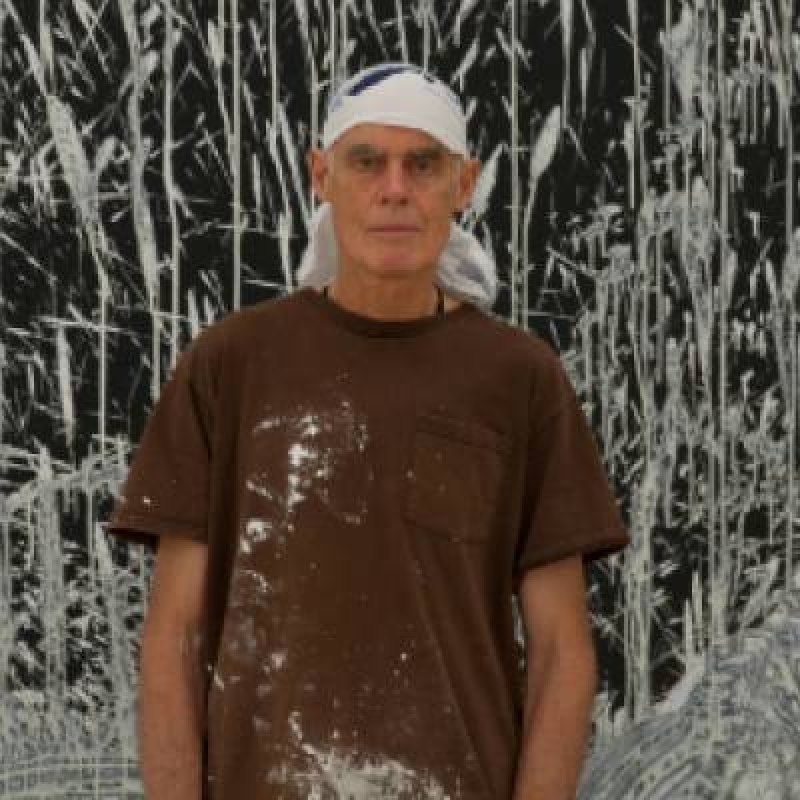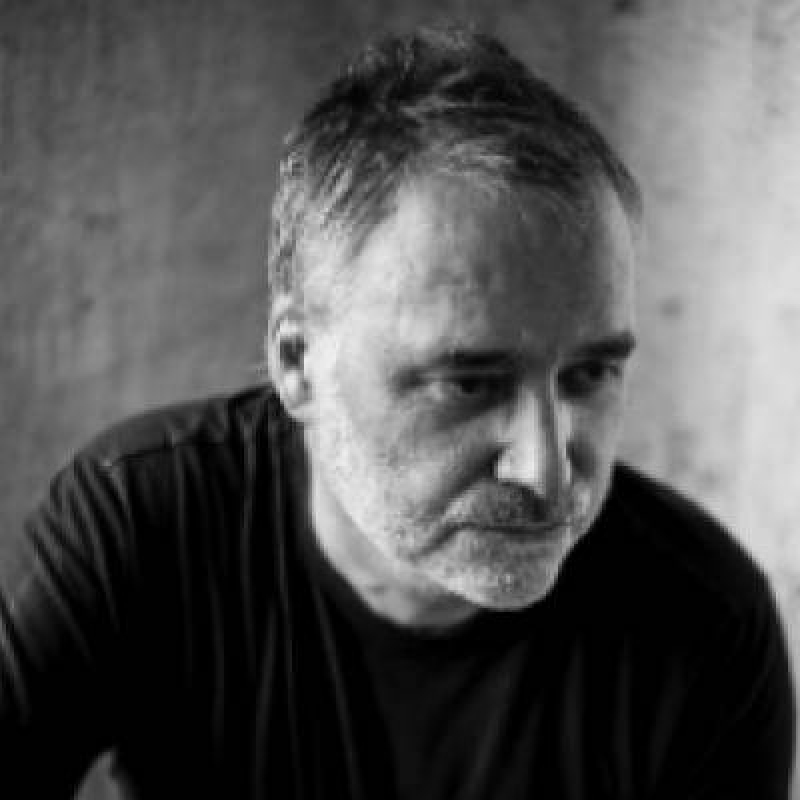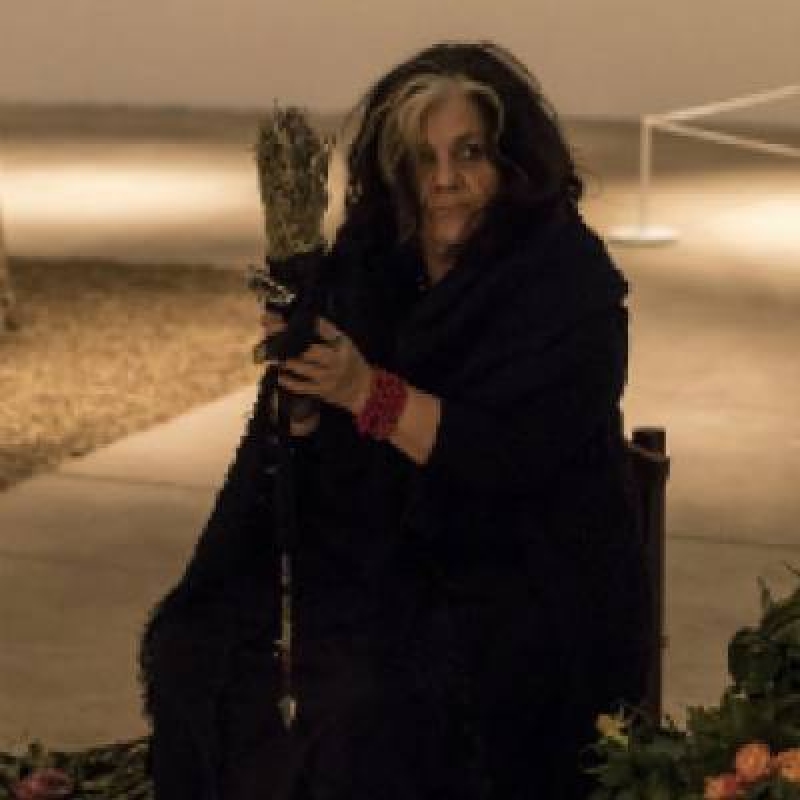1. Tell us a little bit about yourself, your art practice, and your creative journey.
I am English. I've always been an artist. Some childhood influences were the big tides in my local river, it's tidal mud, and the cliffs of its gorge. My work is made by walking in a variety of wilderness and rural landscapes and often making sculptures in and of places along the way. Journeys and the materials of nature.
What was the draw towards this project, towards being part of TSP’19?
A group exhibition in such a great place, that I had not been to before, was intriguing , and a big international show was, for me, like ' the good old days". I was flattered and challenged to be given such a prime place in the show. And it was the first good opportunity for me to show my work publicly in India.
Does the environment/your surroundings play a part in your creative practice? Does it tend to thread into the narrative of your work?
The environment and the many locations around the world is exactly what my work is about. I use natural materials like stones or water or mud.
Had you been to Rajasthan and/ or India before arriving for TSP 19? Did you spend any extended time in India after the opening? (IF NOT LIVING IN INDIA)
I had not been to Rajasthan before. In 1984 I made a long walk with Hamish Fulton in Ladakh, and in 2003 Denise Hooker and l spent a creative week with the great Indian artist Jivya Soma Mashe on his tribal land In Maharashtra. This subsequently led to our museum exhibitions together in Düsseldorf and Milan. After the opening Denise and l spent a week at the Cochi Biennale. Then l had a week making new works in a forest in Tamil Nadu.
Had you been to Rajasthan/ Jaipur before arriving for TSP 19? Did you spend any extended time in India after the opening? (IF LIVING IN INDIA)
I had not been to Rajasthan before. In 1984 I made a long walk with Hamish Fulton in Ladakh, and in 2003 Denise Hooker and l spent a creative week with the great Indian artist Jivya Soma Mashe on his tribal land In Maharashtra. This subsequently led to our museum exhibitions together in Düsseldorf and Milan. After the opening Denise and l spent a week at the Cochi Biennale. Then l had a week making new works in a forest in Tamil Nadu.
How has this project influenced the way you see your practice?
The TSP 19 project fitted well with the general flow of my art life, giving me the very lucky opportunity to make a new and major work.
What was the highlight of this experience for you?
Many highlights. The daily drive through the city up to the palace and back was always eye-boggling. The crowds of curious and friendly people watching me make my work. The chance to meet and see the new work (to me ) of younger Indian and European artists, many of whom knew my work and had followed it for many years. Emotional and humbling to realise it had somehow found it's way in the world, regardless.
Tell us a little bit about yourself, your art practice, and your creative journey.
My name is Ofri Lapid. I was born in Israel and presently work, study and reside in Berlin, Germany. I am currently completing a PhD in art and anthropology. In both my artistic and academic work, I explore the social and economic agencies invested in the making of cultural heritage as manifested in scientific research, field work and the ethnological display. My work consists of site-specific and collaborative practices, which often provides the basis for object installations, photographs and texts.
What was the draw towards this project, towards being part of TSP’19?
I was invited to take part in the "Imitating Atmosphere" section of the exhibition in Sculpture Park, curated by Shreyas Karle. I was curious about the history of the palace and the manner in which certain conventions of concealment, safeguarding and exclusion, that characterized the historical royal institution, are still consistent today within the heritage site.
Does the environment/your surroundings play a part in your creative practice? Does it tend to thread into the narrative of your work?
It is often so, that I aim at involving the people I meet in the creation of the work. In Madhavendra, I reached to the guards on site with the request for contributing their own personal objects to be displayed in showcases of the palace. Thus, creating a situation in which they will consequently guard their own valuables or the valuables of their colleagues. The request emerged from a need to question the hierarchies of value and representation, as well as to narrate new relations of object/authoriship/legacy. I was lucky to have met many kind people, who invited me to their homes and were eager to contribute their personal items and heritage collectables for the display.
Had you been to Rajasthan and/ or India before arriving for TSP 19? Did you spend any extended time in India after the opening? (IF NOT LIVING IN INDIA)
I have been in Rajasthan in 2012 to take part in Sandarbh Residency in Partapur, where I created the project “Partapur Showcase”
Had you been to Rajasthan/ Jaipur before arriving for TSP 19? Did you spend any extended time in India after the opening? (IF LIVING IN INDIA)
I have been in Rajasthan in 2012 to take part in Sandarbh Residency in Partapur, where I created the project “Partapur Showcase”
How has this project influenced the way you see your practice?
I believe I have yet much to explore. The Rajasthani culture is intricate and complex and the experience has only left me wondering what kind of traces does the work leave behind after disassembled.
What was the highlight of this experience for you?
Meeting all the wonderful individuals, artists, historians, palace employees and their families.
Tell us a little bit about yourself, your art practice, and your creative journey.
MARK PRIME (b. 1963) is a contemporary artist. Based in Mumbai for the last decade, his interest in light, and its attributes, have combined with an affinity for minimalism and geometric abstraction. Resulting works have been realised in a wide range of media including laser installations, sculpture, abstract photography, and, more recently, painting. The artist is an accomplished musician: rhythm, repetition and synchronised patterns are concepts that continually inform his practice. www.markprimestudio.com
What was the draw towards this project, towards being part of TSP’19?
The Nahagarh Fort is a magical site and presented an exciting opportunity and context in which to show art. I welcome opportunities to show in non-traditional spaces and formats that generate new readings of the work.
Does the environment/your surroundings play a part in your creative practice? Does it tend to thread into the narrative of your work?
I’m always inspired by what’s around me – much of my work is made in response to my surroundings and local environment.
Had you been to Rajasthan and/ or India before arriving for TSP 19? Did you spend any extended time in India after the opening? (IF NOT LIVING IN INDIA)
I have visited the city of Jaipur many times over the years for both work and pleasure. Rajasthan is spectacular; I’m always happy to spend more time there.
How has this project influenced the way you see your practice?
Opportunities like this teach you how to be resourceful and self-reliant as an artist to be prepared for multiple challenges during installation. I am very grateful to have been invited.
What was the highlight of this experience for you?
Meeting the other artists included in the exhibition and working with the team at TSP Jaipur. Withstanding a few monkey attacks, all went pretty smoothly!
Tell us a little bit about yourself, your art practice, and your creative journey.
I am an artist of Greek, Canadian and American origin . My work encompasses print, textile, installation, and performance and is influenced by feminism, Greek Mythology, eastern spirituality and Tibetan Buddhism, all of which inform my artistic practice.
Most recently, my artwork has evolved into an ongoing time-based site-specific installation practice, where I create elaborate mandalas made from plucked rose petals and circular mirrors. The creation of the mandala is in and of itself a performance. The rose petals dry over the course of their display, and are subsequently swept away. I have created these mandalas for numerous exhibitions internationally, and was commissioned to create one to honour the visit of the Dalai Lama to the University of Buffalo in 2006.
What was the draw towards this project, towards being part of TSP’19?
I was be able present my work in a for the first time in a heritage site in India within a historical context, in the Maharaja suite with its hand-painted walls adorned with floral themes. It has been a decade since I last presented my work in India. In 2008 my interactive public art work, “The Wish Machine”, was included in 48*C, Public, Art, Ecology", at Khoj and Goethe Institute in Delhi. The public art festival ran for two weeks and my work received much interest and was included in the documentary film 'The Latent City" (2008) directed by Krishnendu Bose. In the past ten years India has emerged as one of the most interesting and exciting international art centers. I was most excited to be able to present a new work in this context and have it be on view for 10 months with guided tours available. The opportunity to connect again with the Indian cultural community and share my recent works, and initiate new discussions was of enormous benefit to me professionally.
Does the environment/your surroundings play a part in your creative practice? Does it tend to thread into the narrative of your work?
My practice is intended to be in harmony with the environment of the site where my work will be installed. Each work influences the future work. My work “The Five Mirrors of the World” was created for the Madhavendra Palace, Nahargarh Fort,
Had you been to Rajasthan and/ or India before arriving for TSP 19? Did you spend any extended time in India after the opening? (IF NOT LIVING IN INDIA)
have been coming to India since 1995. I have a deep affection for India and her people. I often travel to Delhi and from there to the Himalayas region near Dharamsala, visiting friends and Tibetan Buddhist nunneries. I am a cofounder and a director of Dongyu Gatsal Ling Initiatives, working with Jetsunma Tenzin Palmo, of the Dongyu Gatsal Ling Nunnery in India. The Initiative aims to reclaim lost traditions of Tibetan Buddhist women.
I have been in Rajasthan a number of times. In 2005 I participated in Material Devotion, at the Jaipur International Festival, curated by Peter Nagy. I love Jaipur – it is such a beautiful city.
How has this project influenced the way you see your practice?
The beauty of the Madhavendra Palace, Nahargarh Fort is inspirational, and being part of the Sculpture Park 2019 – has given me ideas for future projects and installations. I was very happy to be able to see my work from the roof – which gave me a new perspective.
What was the highlight of this experience for you?
It was wonderful to be with the artists, student interns, and creative staff of The Sculpture Park, and to see the embrace and interest to all by the audience.




